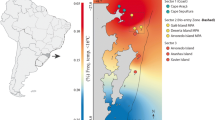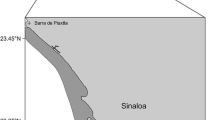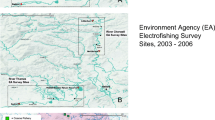Abstract
Habitat characteristics and microhabitat of organisms pose a number of choices to foraging species, for example where and how to search for prey, which prey to select and what foraging technique to employ. Predators can enhance the profitability of foraging by adapting their strategies flexibly in relation to prey characteristics and environmental factors. To investigate the influence of rocky shore characteristics viz., condition of rock, position of limpet on the rock, stage of tide, and limpet opening technique of oystercatcher on the profitability of limpet foraging, a total of 193 attacks on limpets (Patella spp.) by Eurasian oystercatchers (Haematopus ostralegus) were made on Lundy Island, UK, using focal animal sampling. Multiple regression revealed that profitability was influenced by the condition of the rock and the limpet opening technique employed by oystercatchers. The profitability of the limpet opening technique appears to be associated with the condition of the rock. Oystercatchers forage by adapting their foraging strategy in accordance with the nature of the rocks i.e. wetness on which they are foraging.

Similar content being viewed by others
References
Altmann J (1974) Observational study of behaviour: sampling methods. Behaviour 49:227–265
Bazterrica MC, Silliman BR, Hidalgo FJ, Crain CM, Bertness MD (2007) Limpet grazing on a physically stressful Patagonian rocky shore. Journal of Experimental Marine Biology and Ecology 353:22–34
Blomert A-M, Ens BJ, Goss-Custard JB, Hulscher JB, Zwarts L (eds) (1996) Oystercatchers and their estuarine food supplies. Journal of the Netherlands Ornithologists' Union, Amsterdam
Bolduc F, Afton AD (2003) Effects of structural marsh management and salinity on invertebrate prey of waterbirds in marsh ponds during winter on the Gulf coast Chenier plain. Wetlands 23:897–910
Branch GM, Barka A, Hockey PAR, Hutchings I (1987) Biological interactions: causes or effects of variability in the Benguela ecosystem? In: Payne AIL, Gulland JA, Brink KH (eds) The Benguela and comparable ecosystems. South African Journal of Marine Science 5:425–445
Choi CY, Battley PF, Potter MA, Ma Z, Liu W (2014) Factors affecting the distribution patterns of benthic invertebrates at a major shorebird staging site in the Yellow Sea, China. Wetlands 34:1085–1096
Coleman RA, Browne M, Theobalds T (2004) Aggregation as a defense: limpet tenacity changes in response to simulated predator attack. Ecology 85:1153–1159
Coleman RA, Goss-Custard JD, Durell SEA le V dit, Hawkins SJ (1999) Limpet Patella spp. consumption by oystercatchers Haematopus ostralegus: a preference for solitary prey items. Marine Ecology Progress Series 183:253–261
Coleman RA, Hawkins SJ (2000) Limpet relocation from home-scars in relation to position in group. Journal of Marine Biological Association UK 80:1133–1134
Dawkins R, Krebs JR (1979) Arms races between and within species. Proceedings of Royal Society London Series B: Biological Sciences 205:489–511
de Elgea AO, Arizaga J (2016) Fuel load, fuel deposition rate and stopover duration of the common sandpiper Actitis hypoleucos during the autumn migration. Bird Study 63:262–267
Denny MW (1988) Biology and the mechanics of the wave-swept environment. Princeton University Press, Princeton
Denny MW (1995) Predicting physical disturbance: mechanistic approaches to the study of survivorship on wave-swept shores. Ecological Monograph 65:371–418
Denny MW, Daniel TL, Koehl MAR (1985) Mechanical limits to size in wave-swept organisms. Ecological Monograph 55:69–102
Erlandson JM, Braje TJ, Rick TC, Jew NP, Kennett DJ, Dwyer N, Ainis AF, Vellanoweth RL, Watts J (2011) 10,000 years of human predation and size changes in the owl limpet (Lottia gigantea) on San Miguel Island, California. Journal of Archaeological Science 38:1127e1134
Feare CJ (1971) Predation of limpets and dogwhelks by oystercatchers. Bird Study 18:121–129
Frank PW (1982) Effects of winter feeding on limpets by black oystercatchers, Haematopus bachmani. Ecology 63:1352–1362
Furnell J, Hull SL (2014) Cliff top habitats provide important alternative feeding resources for wading birds of conservation importance wintering on non-estuarine coasts. Estuarine, Coastal and Shelf Science 139:119e126
Ghosh N, Spering M, Wilshaw J, Nagarajan R (2003) Diurnal activity budgets of breeding Eurasian oystercatchers Haematopus ostralegus feeding on limpets on rocky shores. Wader Study Group Bulletin 101(102):81–87
Goss-Custard JD (ed) (1996) The oystercatchers: from individuals to populations. Oxford University Press, Oxford
Goss-Custard JD, Cayford JT, Boates JS, Durell SEA le V dit (1987) Field tests of the accuracy of estimating prey size from bill-length in oystercatchers, Haematopus ostralegus, feeding on mussels, Mytilus edulis. Animal Behaviour 35:1078–1083
Goss-Custard JD, Durell SEA le V dit (1988) The effect of dominance and feeding method on the intake rates of oystercatchers, Haematopus ostralegus, feeding on mussels. Journal of Animal Ecology 57:827–844
Hahn T, Denny M (1989) Tenacity-mediated selective predation by oystercatchers on intertidal limpets and its role in maintaining habitat partitioning by Collisella scabra and Lottia digitalis. Marine Ecology Progress Series 53:1–10
Harris MP (1965) The food of some Larus gulls. Ibis 107:43–54
Heppleston PB (1971) Feeding techniques of the oystercatcher. Bird Study 18:15–20
Hockey PAR (1981) Feeding techniques of the African black oystercatcher Haematopus moquini. In: Cooper J (ed) Proceedings of the symposium on birds of the sea and shore, 19–79. African Seabird Group, Cape Town, pp 99–115
Hockey PAR, Branch GM (1984) Oystercatchers and limpets: impact and implications a preliminary assessment. Ardea 72:199–206
Hockey PAR, Underhill LG (1984) Diet of the African black oystercatcher Haematopus moquini on rocky shores: spatial, temporal and sex related variation. African Journal of Zoology 19:1–11
Hulscher JB (1996) Food and feeding behaviour. In: Goss-Custard JD (ed) The oystercatchers: from individuals to populations. Oxford University Press, Oxford, pp 7–29
Krebs JR (1978) Optimal foraging: decision rules for predators. In: Krebs JR, Davies NB (eds) Behavioural ecology: an evolutionary approach. Blackwell, Oxford, pp 23–63
Krebs JR, Davies NB (1993) An introduction to behavioural ecology, 3rd edn. Blackwell Science, Oxford
Lea SEG, Chow PKY, Leaver LA, McLaren IPL (2020) Behavioral flexibility: a review, a model, and some exploratory tests. Learning & Behavior 48:173–187
LeRossignol AP, Buckingham S, Lea SEG, Nagarajan R (2011) Breaking down the mussel (Mytilus edulis) shell: which layers affect oystercatchers' prey preferences? Journal of Experimental Marine Biology and Ecology 405:87–92
Lord JP, Lyczkowski ER, Wilson WH Jr (2011) Behavior and microhabitat selection of the tortoiseshell limpet Testudinalia testudinalis in the Northwest Atlantic intertidal zone. Journal of Experimental Marine Biology and Ecology 407:234–240
McConkey KR, Bell BD (2005) Activity and habitat use of waders are influenced by tide, time and weather. Emu 105:331–340
Menge BA (2000) Top-down and bottom-up community regulation in marine rocky intertidal habitats. Journal of Experimental Marine Biology and Ecology 250:257–289
Nagarajan R (2000) The foraging behaviour of oystercatcher (Haematopus ostralegus) in relation to food depletion during winter on the river Exe estuary. University of Exeter, UK, England. PhD dissertation
Nagarajan R, Goss-Custard JD, Lea SEG (2002a) Oystercatchers use colour preference to achieve longer term optimality. Proceedings of Royal Society London Series B: Biological Sciences 269:523–528
Nagarajan R, Lea SEG, Goss-Custard JD (2002b) Re-evaluation patterns of mussels (Mytilus edulis) by European oystercatchers (Haematopus ostralegus). Canadian Journal of Zoology 80:846–853
Nagarajan R, Lea SEG, Goss-Custard JD (2002c) Mussel valve discrimination and strategies used in valve discrimination by the oystercatcher Haematopus ostralegus. Functional Ecology 16:339–345
Nagarajan R, Lea SEG, Goss-Custard JD (2006) Seasonal variations in mussel Mytilus edulis L. shell thickness and strength and their ecological implications. Journal of Experimental Marine Biology and Ecology 339:241–250
Nagarajan R, Lea SEG, Goss-Custard JD (2008) Relation between water quality and dorsal thickness of mussel (Mytilus edulis) and its ecological implications for wintering oystercatchers (Haematopus ostralegus). Acta Zoologica Academiae Scientiarum Hungaricae 54(Suppl.1):225–238
Nagarajan R, Lea SEG, Goss-Custard JD (2015) Do oystercatchers, Haematopus ostralegus select the most profitable limpets? Journal of Experimental Marine Biology and Ecology 464:26–34
Norton-Griffiths M (1967) Some ecological aspects of the feeding behaviour of the oystercatcher Haemotopus ostralegus on the edible mussel Mytilus edulis. Ibis 109:412–424
Norton-Griffiths M (1968) The feeding behaviour of the Oystercatcher (Haemotopus ostralegus). University of Oxford, Oxford, UK. D.Phil. Dissertation
Pound RJ, Miller LP, King FA, Burnaford JL (2020) Temperature affects susceptibility of intertidal limpets to bird predation. Journal of Experimental Biology 223:jeb213595. https://doi.org/10.1242/jeb.213595
Power ME, Tilman D, Estes JA, Menge BA, Bond WJ, Mills LS, Daily G, Castilla JC, Lubchenco J, Paine RT (1996) Challenges in the quest for keystones. BioScience 46:609–620
Santini G, Thompson RC, Tendi C, Hawkins SJ, Hartnoll RG, Chelazzi G (2004) Intraspecific variability in the temporal organisation of foraging activity in the limpet Patella vulgata. Marine Biology 144:1165–1172
Sitters PH (2000). The role of night-feeding in shorebirds in an estuarine environment with specific reference to mussel-feeding oystercatchers. DPhil Dissertation, University of Oxford, UK
Spruzen FL, Richardson AMM, Woehler EJ (2008) Influence of environmental and prey variables on low tide shorebird habitat use within the Robbins passage wetlands, Northwest Tasmania. Estuarine, Coastal and Shelf Science 78:122e134
Stimson J (1973) The role of the territory in the ecology of the intertidal limpet Lottia gigantea (Gray). Ecology 54:1020–1030
Suarez N, Retana MV, Yorio P (2014) Effect of feeding technique and prey characteristics on the feeding rate of Olrong's gulls (Larus atlanticus). Waterbirds 37:79–87
Sutherland WJ, Ens BJ, Goss-Custard JD, Hulscher JB (1996) Specialization. In: Goss-Custard JD (ed) The oystercatchers: from individuals to populations. Oxford University Press, Oxford, pp 56–76
Wootton JT (1992) Indirect effects, prey susceptibility, and habitat selection: impacts of birds on limpets and algae. Ecology 73:981–991
Wootton JT (1997) Estimates and tests of per capita interaction strength: diet, abundance, and impact of intertidally foraging birds. Ecological Monograph 67:45–64
Zacharias MA, Roff JC (2001) Use of focal species in marine conservation and management: a review and critique. Aquatic Conservation: Marine and Freshwater Ecosystems 11:59–76
Zwarts L, Cayford JT, Hulscher JB, Kersten M, Meire PM, Triplet P (1996) Prey size selection and intake rate. In: Goss-Custard JD (ed) The oystercatchers: from individuals to populations. Oxford University Press, Oxford, pp 30–55
Acknowledgements
We thank David Taylor for his help in arranging the logistics and equipment necessary for the research. RN gratefully acknowledges The Leverhulme Trust, London, United Kingdom for funding through an Early Career Award (Grant No: ECF/2004/0150). We are grateful to three anonymous referees for their valuable comments and Editor in Chief Dr. M.L. Otte for their valuable comments and encouragement.
Author information
Authors and Affiliations
Corresponding author
Additional information
Publisher’s Note
Springer Nature remains neutral with regard to jurisdictional claims in published maps and institutional affiliations.
Rights and permissions
About this article
Cite this article
Edwards, R., Rossiter, L., Nagarajan, R. et al. Influence of Rocky Shore Characteristics on the Foraging Profitability of Eurasian Oystercatchers Haematopus ostralegus. Wetlands 41, 43 (2021). https://doi.org/10.1007/s13157-021-01402-z
Received:
Accepted:
Published:
DOI: https://doi.org/10.1007/s13157-021-01402-z




